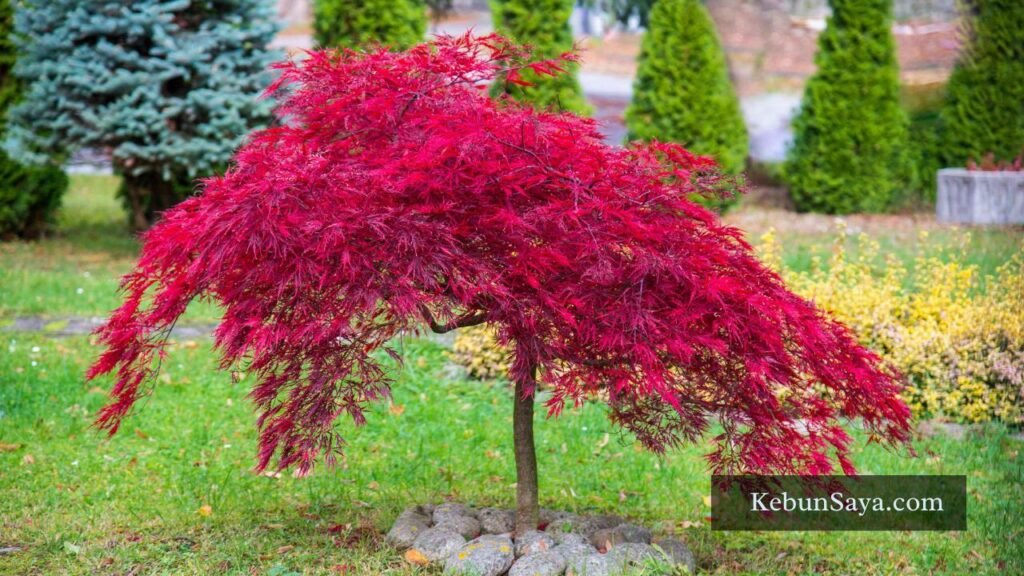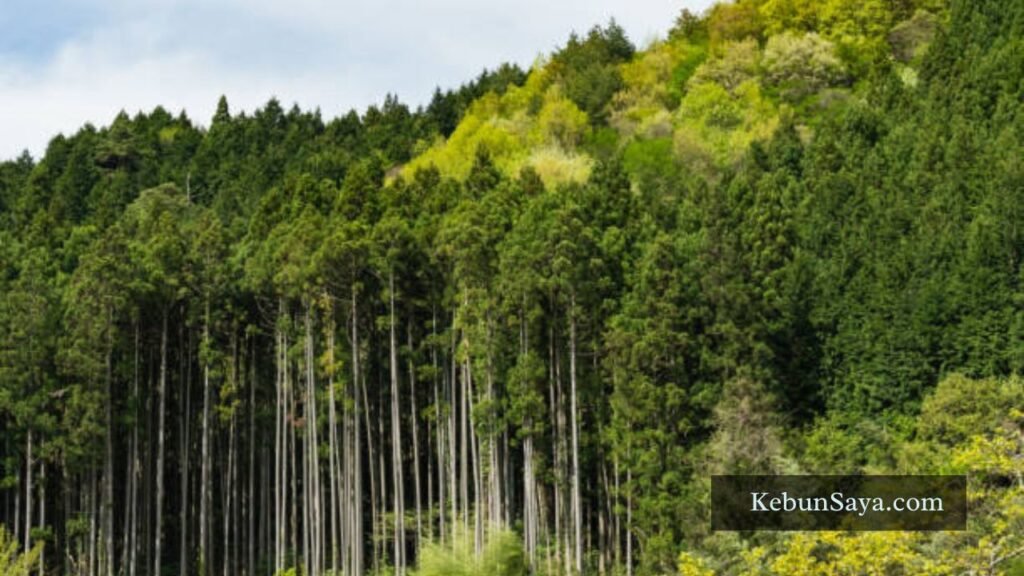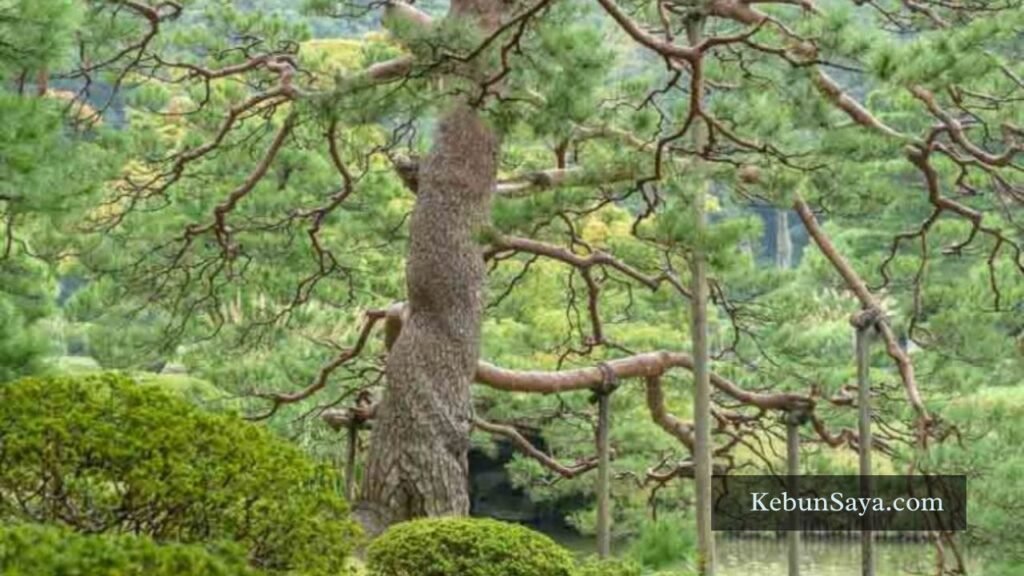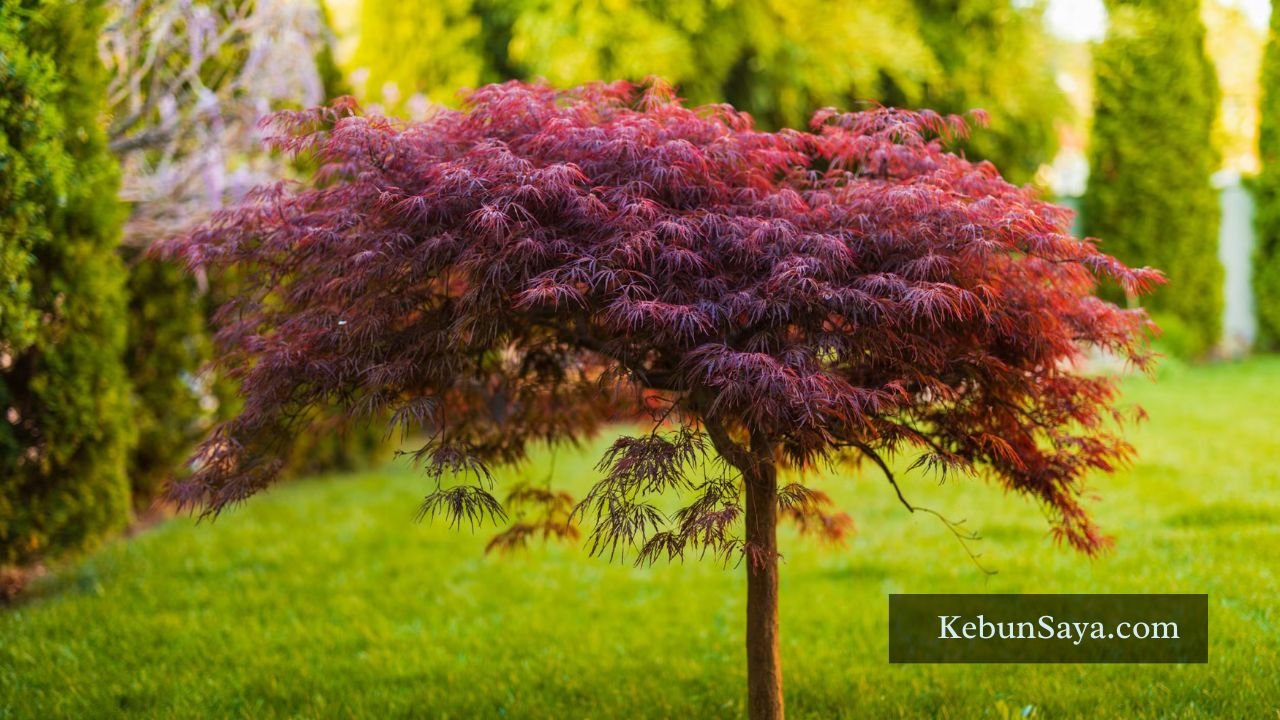Explore 10 Amazing Japanese Trees Varieties
Some of the most stunning trees in the world are found right in Japan. From the iconic cherry blossoms to the ancient ginkgos, Japanese trees add beauty to landscapes and also hold deep cultural significance. In this article, we will explore ten Japanese Trees Varieties that showcase Japan’s rich horticultural heritage. By the end, you will appreciate their aesthetic value and also understand their roles in tradition, symbolism, and even sustainability.
10 Japanese Trees Varieties
Japan boasts a rich diversity of tree species, each with unique characteristics that reflect the nation’s natural beauty and cultural significance. Japan’s cultural practices offer a deeper appreciation for nature’s impact on life and art in this enchanting country. Following are some varieties of japanese trees:
1. Japanese Maple
Scientific Name: Acer palmatum
Japanese Maple stands out not only for its breathtaking beauty but also for its remarkable adaptability. The delicate lace-like leaves, which morph in color from vibrant greens to fiery reds in autumn, create a stunning visual mosaic that captivates observers throughout the seasons. A tree planted in partial shade may produce leaves with richer pigmentation, while those basking in full sun may exhibit a more subdued palette.

These trees can thrive in both urban gardens and serene landscapes, making them a favored choice for many garden enthusiasts.Their size variety ( from dwarf cultivars that fit snugly into small gardens to majestic specimens that serve as striking focal points ) further enhances their appeal. It allows them to infuse charm and elegance into any space. This chameleon-like quality encourages gardeners to experiment with diverse planting locations.
2. Cherry Blossom
Scientific Name: Prunus serrulata
Cherry blossoms, or sakura, are a stunning emblem of Japanese culture, celebrated for their ephemeral beauty and deep-rooted symbolism. This annual spectacle draws countless visitors, yet it also beckons the Japanese to reconnect with their heritage through hanami, or blossom viewing. Cherry blossoms encompass a variety of species, each offering unique qualities. For example, the Yoshino cherry is renowned for its stunning clusters of pale pink flowers, while the weeping cherry showcases graceful, cascading blooms.
Among the many Japanese tree varieties that adorn parks and gardens, the cherry blossom stands out for its fleeting magnificence. Each spring serves as a reminder of life’s transience, inspiring contemplation and reflection. Exploring these diverse Japanese tree varieties enriches our appreciation for their beauty and also reveals the rich tapestry of seasonal cycles.
3. Japanese Cedar
Scientific Name: Cryptomeria japonica
Japanese Cedar stands as a mesmerizing emblem of the country’s rich botanical heritage. Distinguished by its tall stature and conical shape, this tree graces the landscape with its beauty and also plays a vital role in the ecosystem. This sacred tree variety is often considered a living connection to Japan’s past, invoking deep cultural significance while still thriving in contemporary forestry practices. It has an exceptional ability to absorb moisture, making it a natural solution for combating humidity in urban areas.

Its fragrant wood is prized in construction, furniture-making, and even in traditional temples, where its durability and resistance to decay have made it a favorite among artisans. Japanese Cedar possesses unique environmental traits that set it apart from other Japanese tree varieties. As climate change continues to challenge global ecosystems, the resilience of Japanese Cedar offers hope. This quality is especially beneficial in cities experiencing high levels of pollution, where the tree acts as a natural air purifier.
4. Japanese Wisteria
Scientific Name: Wisteria floribunda
Japanese wisteria is a stunning spectacle that transforms gardens into dreamlike landscapes when in full bloom. Gracefully cascading clusters of lavender, white, and even pink blossoms mesmerize all who encounter them. Cultivating Japanese wisteria is more than just planting a vine; it’s about understanding its character among the diverse Japanese tree varieties that grace gardens. This climber thrives best when supported by sturdy structures, allowing its delicate vines to intertwine and weave a captivating tapestry of color and fragrance.
The wisteria’s roots benefit from deep, nutrient-rich soil, making it a perfect candidate for companion planting with other Japanese specimens like cherry or maple trees, which can enhance the overall harmony of your garden. While its beauty is undeniable, careful consideration of its growth habits is essential. With a potential to reach astonishing heights, proper pruning is key to maintaining its elegance without overwhelming surrounding flora.
5. Japanese Black Pine
Scientific Name: Pinus thunbergii
The Japanese Black Pine is not just a tree; it’s a living testament to the artistry of nature. Japanese Black Pines possess a striking ability to adapt to various environments. Their needles, dark green and lustrous, can transform an ordinary landscape into a serene oasis. This iconic species, with its bold silhouettes and resilient nature, thrives in coastal regions, making it a symbol of endurance against harsh winds and salty air.

They play a crucial ecological role, providing shelter and sustenance to diverse wildlife, and are a favorite among gardeners due to their versatility. Historically revered in Japanese culture, these trees represent strength and perseverance, often adorning temples and gardens where their unique forms can be fully appreciated. By integrating these trees into modern landscapes, we can celebrate traditional aesthetics while fostering biodiversity.
6. Japanese Stewartia
Scientific Name: Stewartia pseudocamellia
Japanese Stewartia is truly a hidden gem among Japanese tree varieties. This deciduous tree gracefully showcases smooth, flaking bark that reveals layers of color, providing year-round visual interest. For gardeners seeking to create diverse ecosystems, this tree enhances beauty and also supports local wildlife. In summer, its glossy green leaves create a lush canopy, but come autumn. They ignite into a stunning display of reds and oranges, making it a focal point in any garden.
The Japanese Stewartia thrives in a variety of soil types and prefers partial shade, making it adaptable to different landscapes. Its fragrant, white camellia-like flowers bloom in midsummer, attracting pollinators and elevating the sensory experience of outdoor spaces. As a relatively slow grower, it allows for thoughtful placement within a landscape.
7. Japanese Snowbell
Scientific Name: Styrax japonicus
The Japanese Snowbell exemplifies the charm found in many Japanese tree varieties, captivating garden enthusiasts with its delicate, drooping white blossoms. As the season progresses, the tree transforms, showcasing its glossy green leaves which turn to vibrant yellows and oranges in autumn. These flowers emit a sweet, subtle fragrance that attracts pollinators, making them a delightful addition to any garden.

The Japanese Snowbell thrives in various climates, proving adaptable and resilient. It prefers well-drained soil and partial shade, making it an excellent choice for lower-light areas where many other trees struggle. The Japanese Snowbell can create serene garden spaces, inviting contemplation and quiet reflection.
8. Japanese Pagoda Tree
Scientific Name: Sophora japonica
The Japanese Pagoda Tree is a striking addition to landscapes, celebrated for its unique characteristics. This deciduous tree, reaching heights of 50 to 75 feet, showcases a broad, rounded crown that offers a lush canopy during warm months. One fascinating aspect of the Japanese Pagoda Tree is its resilience. Thriving in various soil types and tolerating drought conditions, it has become a popular choice among gardeners seeking reliable Japanese tree varieties.
In late summer, clusters of fragrant, creamy-white flowers bloom, attracting pollinators and enhancing the tree’s allure. The leaves, composed of multiple leaflets, transform to a brilliant yellow in autumn, creating a stunning seasonal display. This tree supports biodiversity, providing habitat and food for various wildlife, including birds and insects. With minimal maintenance required, it’s ideal for urban landscapes or gardens.
9. Japanese Red Pine
Scientific Name: Pinus densiflora
The Japanese Red Pine stands out among Japanese tree varieties for its remarkable resilience and beauty. This evergreen tree can reach impressive heights of up to 100 feet, boasting long, slender needles that cascade gracefully. Cultivated widely in Japan for its timber and ornamental qualities, the Japanese Red Pine is a vital part of coastal ecosystems. Its extensive root system helps prevent soil erosion, stabilizing sandy soils along shorelines.

The distinctive, reddish-brown bark is not only visually appealing but also serves as a protective barrier against pests and harsh weather conditions. This tree also holds cultural importance, symbolizing strength and longevity in Japanese tradition. Its striking silhouette and ability to thrive in various environments make it an irresistible choice for landscapers seeking to incorporate native beauty into modern gardens.
10. Japanese Zelkova
Scientific Name: Zelkova serrata
The Japanese Zelkova is a remarkable addition to the world of Japanese tree varieties. Renowned for its graceful, arching branches and vibrant autumn foliage, this tree truly stands out in gardens and urban landscapes alike. It thrives in urban environments, tolerating pollution and drought better than many other trees. This adaptability makes it a favorite among landscape designers who seek sustainable options for city parks and streetscapes.
Its serrated leaves turn stunning shades of orange and red in the fall, creating a picturesque backdrop that entices photographers and nature lovers. The Japanese Zelkova brings a unique charm that enriches any setting, its strong wood is often used in fine furniture and crafts, further enhancing its value.
Blog Conclusion
The diverse array of Japanese tree varieties offers a stunning glimpse into the natural beauty and cultural significance of Japan’s flora. From the iconic cherry blossoms to the resilient bonsai, each tree holds a unique story and charm. Whether you’re an avid gardener or simply a nature enthusiast, exploring these varieties can enhance your appreciation for the remarkable biodiversity around us. So, why not plant one of these amazing trees and celebrate the elegance of Japanese nature?
Read More: 10 Best Japanese Plants Indoor and How To Care for Them
FAQs
What is the most famous Japanese tree?
The most famous Japanese tree is undoubtedly the Sakura, or cherry blossom tree. Known for its beautiful pink and white flowers, the Sakura holds deep cultural significance in Japan.
How many varieties of Japanese maples are there?
Japanese maples, known for their stunning foliage and graceful shapes, come in over 1,000 different varieties. These trees belong to the species Acer palmatum and offer a diverse range of colors, sizes, and leaf shapes.
Are Japanese trees hard to grow?
Growing Japanese trees can be a beautiful addition to any garden, and many types are surprisingly easy to cultivate. Trees like the Japanese Maple and Sakura are favored for their stunning colors and shapes. With the right conditions and care, these trees can thrive, providing a unique aesthetic to your landscape.


